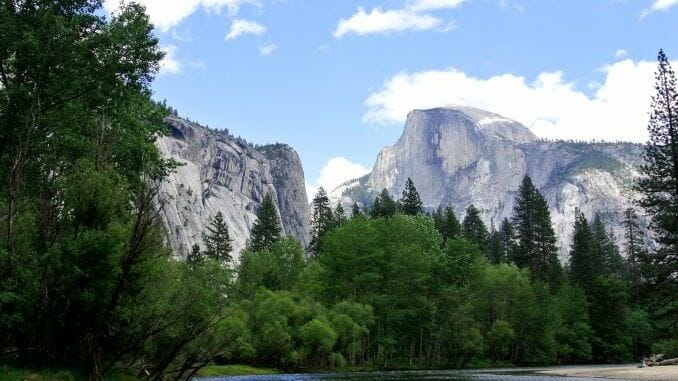How to Score a Campsite in Yosemite Valley
Photo from Unsplash
It took five people in three states using eight screens, but in the end, we lassoed the unicorn.
Trying to book National Park campsites in our post-pandemic world can be like trying to score front row seats to a Rolling Stones concert. This scarcity recently hit home as my wife, Anne, and I began mapping out this summer’s adventure—a nine-week cross-country tour of the United States. Booking seven months in advance would be fine, right? Wrong. After getting shut out of Sequoia National Park, whiffing up and down the California coast, and reserving the last campsite available at North Cascades National Park (a supposedly noncompetitive park on the Canadian border), we clearly needed to up our game to bag the big one: Yosemite.
In a typical summer, Yosemite only has 1,995 spots to pitch a tent or park an RV. Remember, this is for a park the size of Rhode Island that saw more than 3 million visitors last year.
2022 looked at those daunting stats and said: “Hold my beer.” This year, three campgrounds are closed, one was raffled off in a pilot lottery program (which I somehow missed), and one more may open at some undefined date due to wastewater issues. That left three campgrounds to choose from—Upper Pines, Lower Pines, and Hodgdon Meadow. Four hundred and three sites for the multitude of hopeful campers who want to sleep inside the park boundaries.
Staying within those boundaries is a big deal, especially if you’re lucky enough to get a spot in Yosemite Valley. It’s the basecamp for big attractions like El Capitan, Bridalveil Falls, and Glacier Point. The closest affordable backup plan we found was a private campground an hour away from the west entrance. Tack on the hour to get from that entrance to the valley itself, and we’re talking an extra four hours of driving a day. To fully enjoy the wonders of Yosemite, Anne and I knew we’d have to lose that commute and snag one of those coveted campsites.
Our first choice of campgrounds was definitely Lower Pines, which is smaller and (reportedly) quieter than Upper Pines. It’s right in the valley, tucked among the trees with a stunning view of Half Dome in the distance. The Merced River runs past it, providing the perfect place to cool off after a long day of hiking in August. Multiple trailheads are within walking distance, and there’s a bus stop for the park shuttle at the entrance. All of this, for $36 a night. Sign us up.
Yosemite opens up campground reservations on the 15th of every month up to five months in advance at 7 a.m. PST. We were looking to book August 9-13, which meant our booking window opened on March 15 at 10 a.m. in our home state of New Hampshire. From our research, we knew that people from all over the world would be logging on simultaneously to get one of those 403 spots. We’d have a few minutes at most before they all disappeared. To up our chances, Anne and I devised a four-step plan.
Step one: Fine tune our research. We decided to focus on Upper and Lower Pines, since they’re both in Yosemite Valley (Hodgdon Meadow is at the park’s west entrance). Then we narrowed our search to sites that could accommodate 18-20 foot RVs—big enough for our vintage pop-up camper, but not so large that we’d be competing with bus-sized campers.
Step two: Choose specific campsites. We hedged our bets with a combination of sites we liked best (riverside, end of row, away from main roads, etc.), and ones we thought wouldn’t be as popular. We also added a backup site at the less-popular Hodgdon Meadows.
-

-

-

-

-

-

-

-

-

-

-

-

-

-

-

-

-

-

-

-

-

-

-

-

-

-

-

-

-

-

-

-

-

-

-

-

-

-

-

-








































